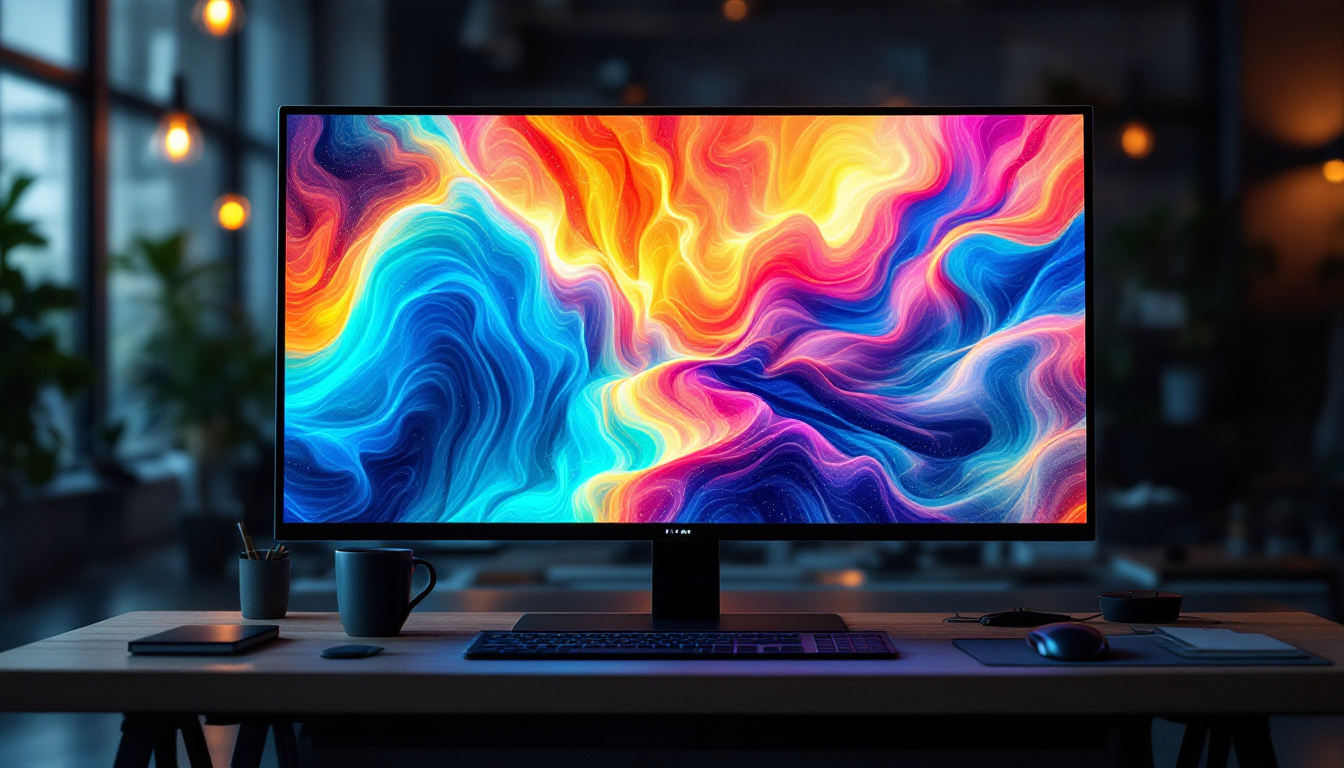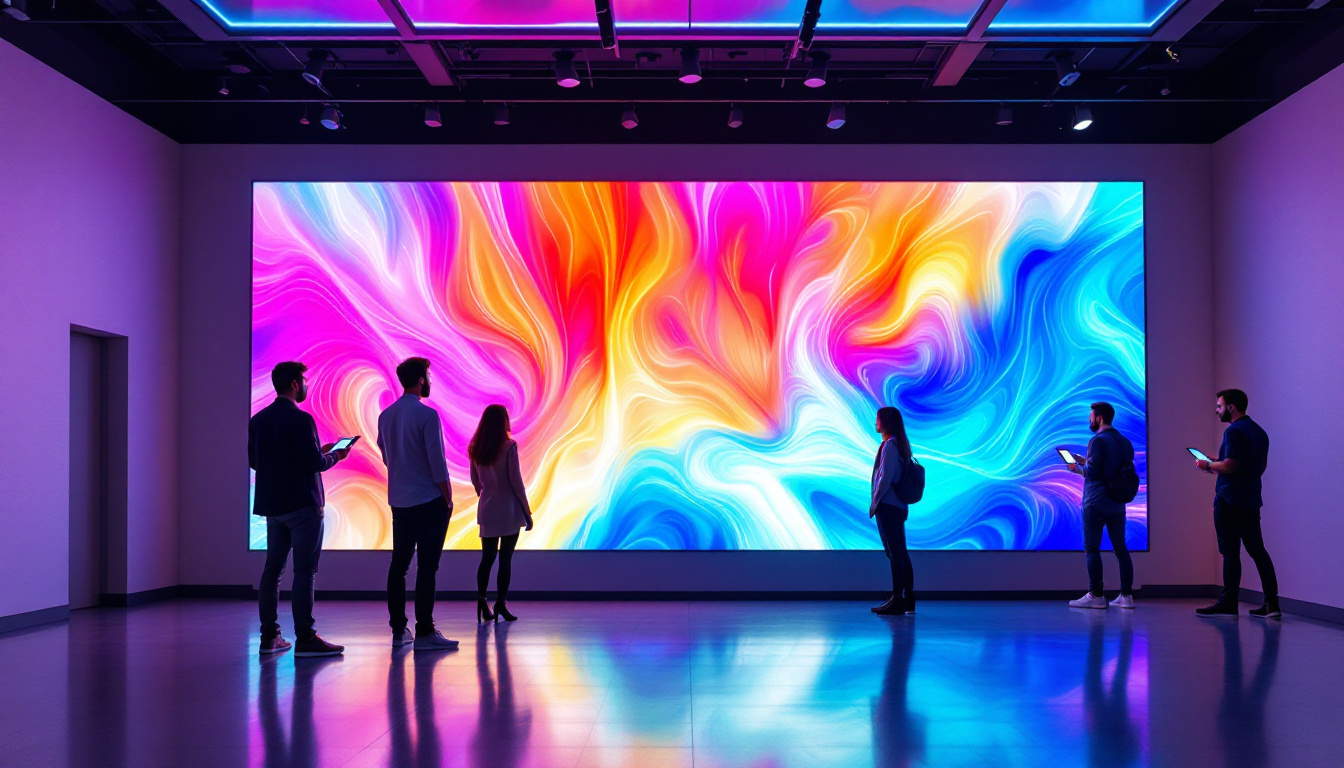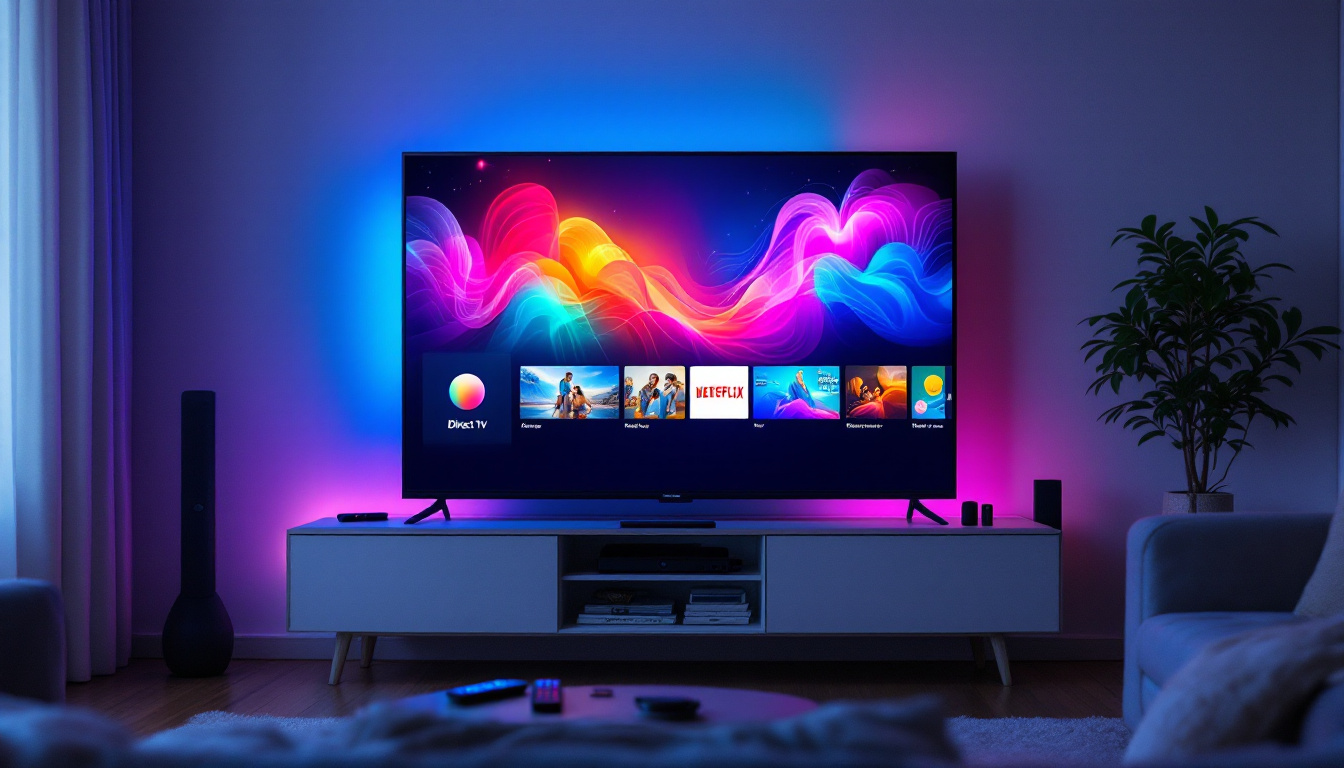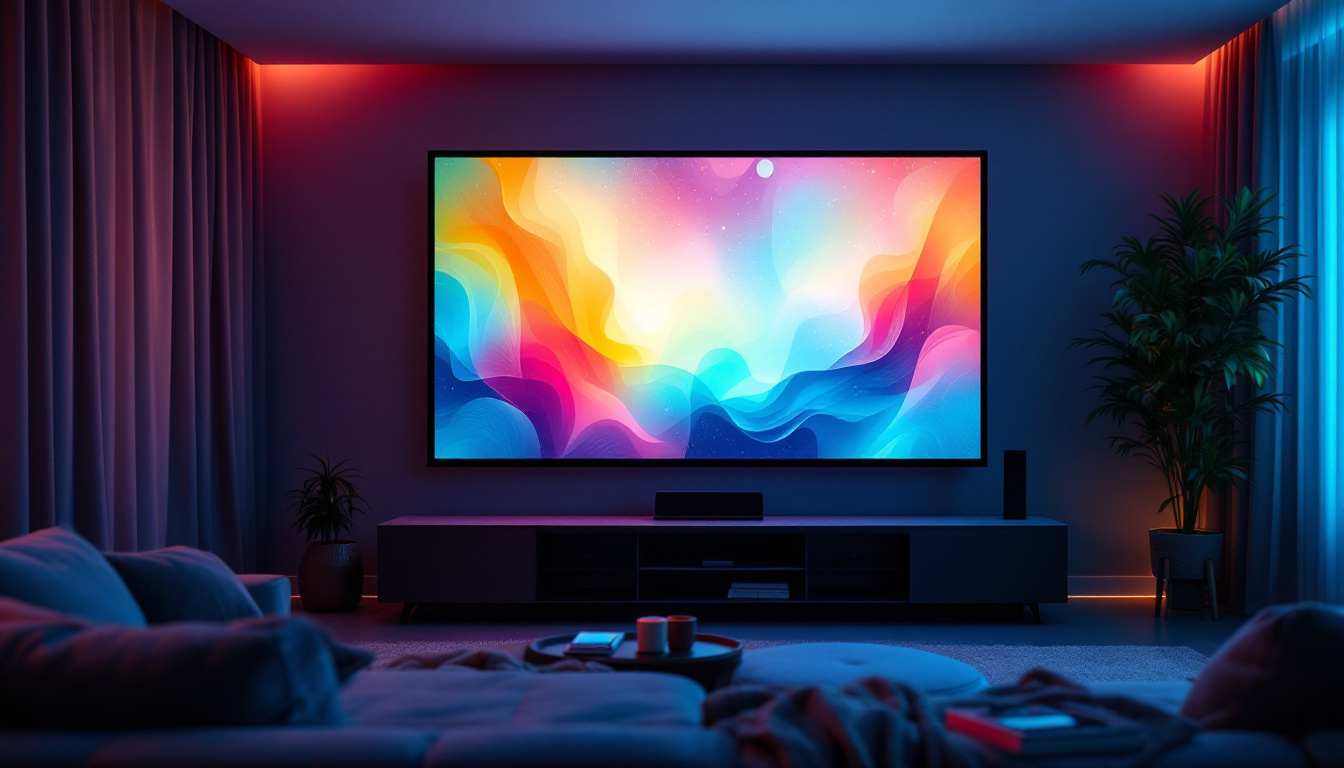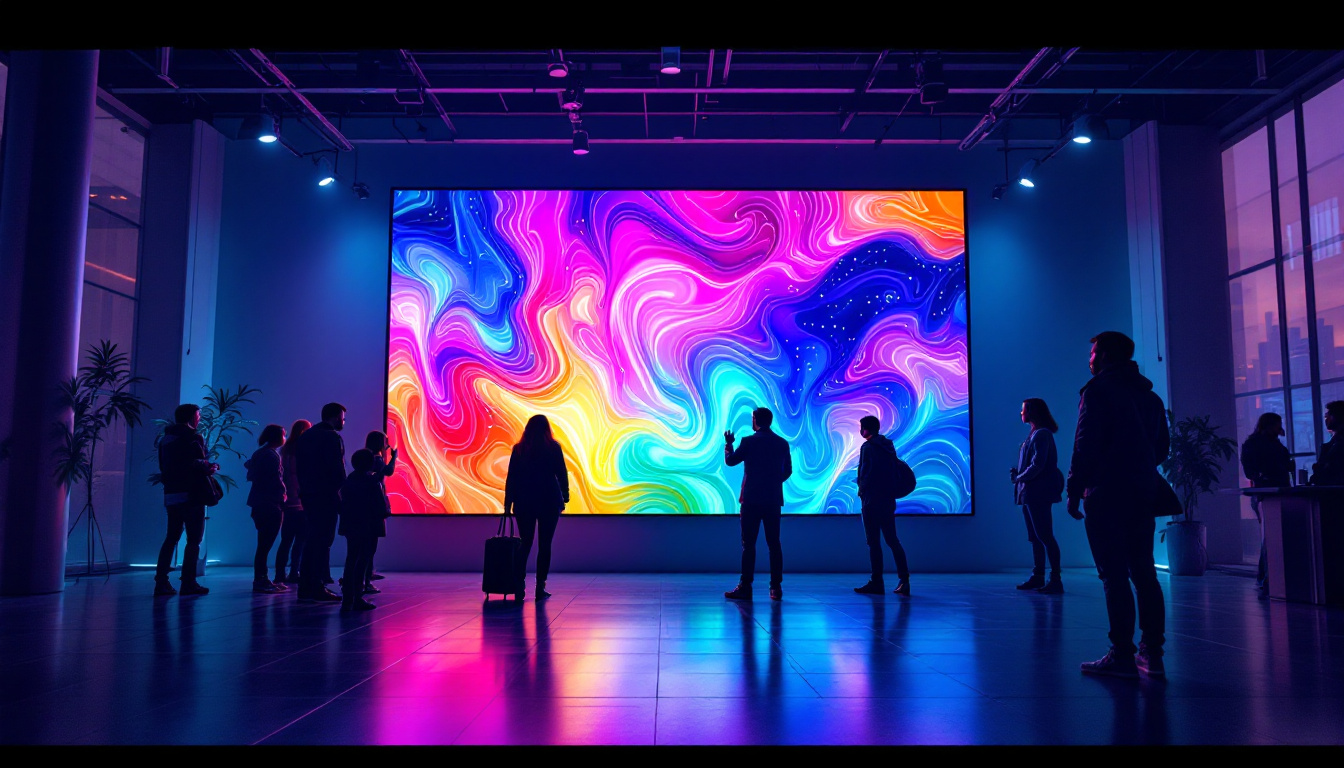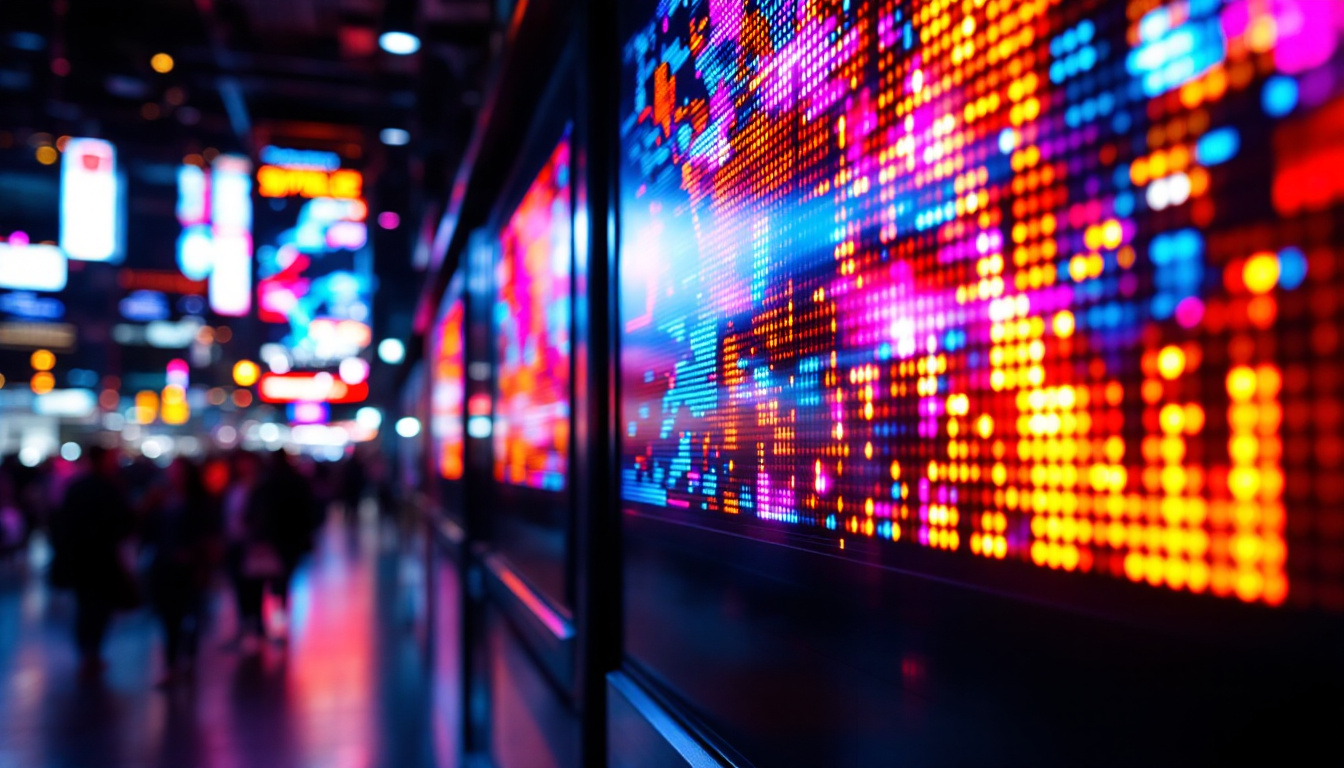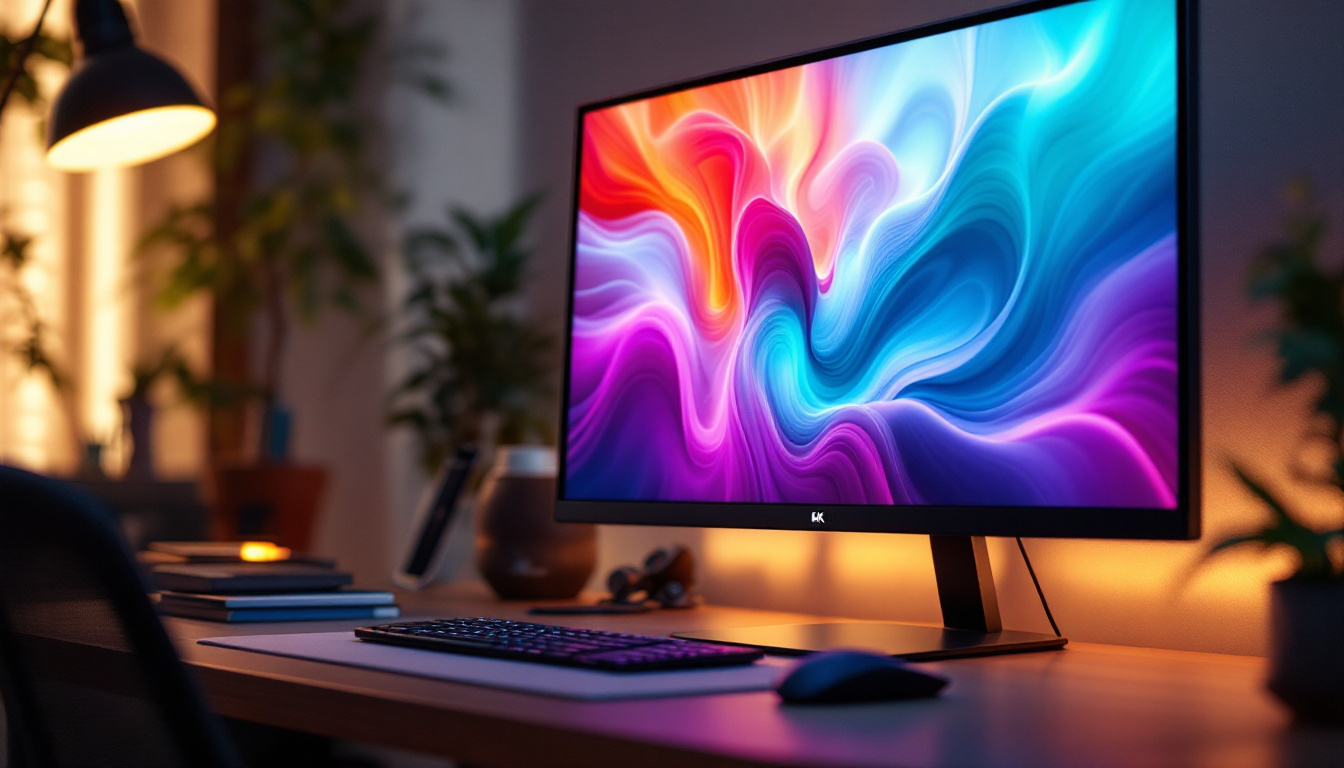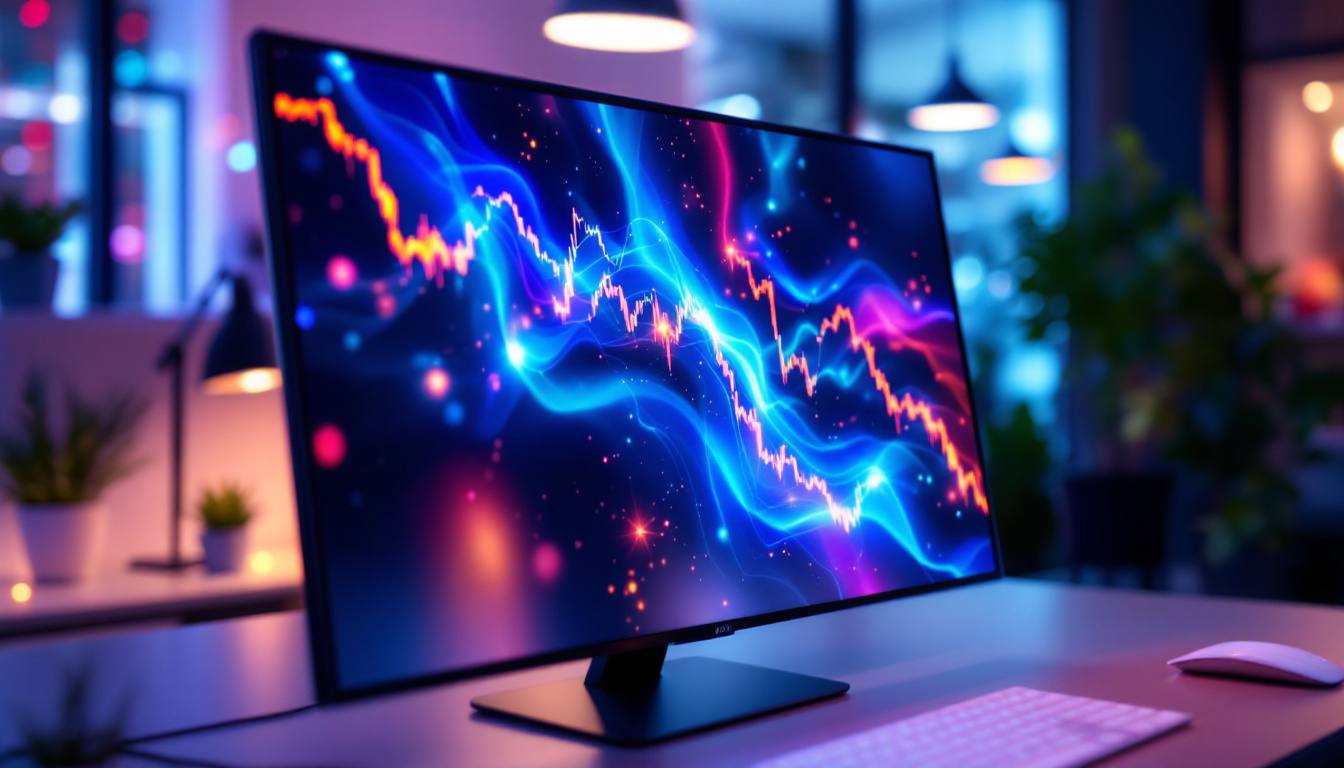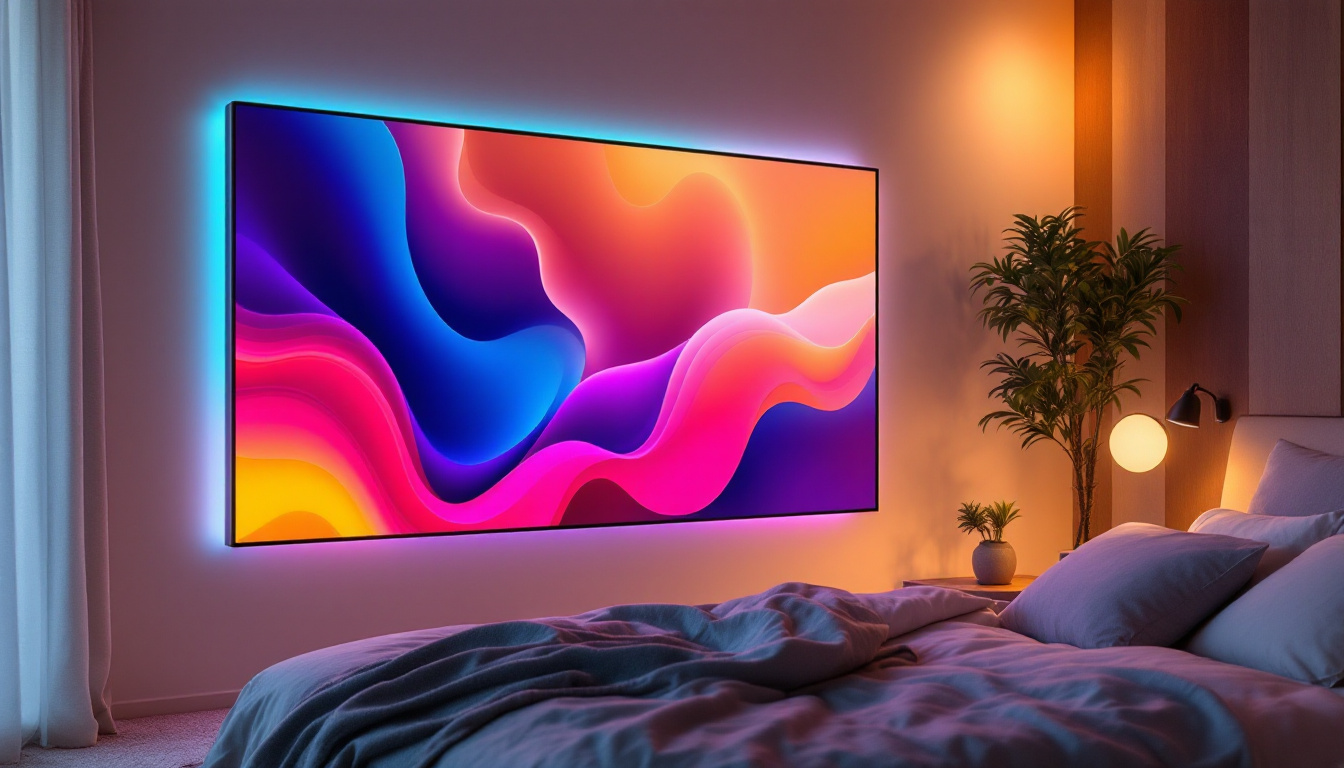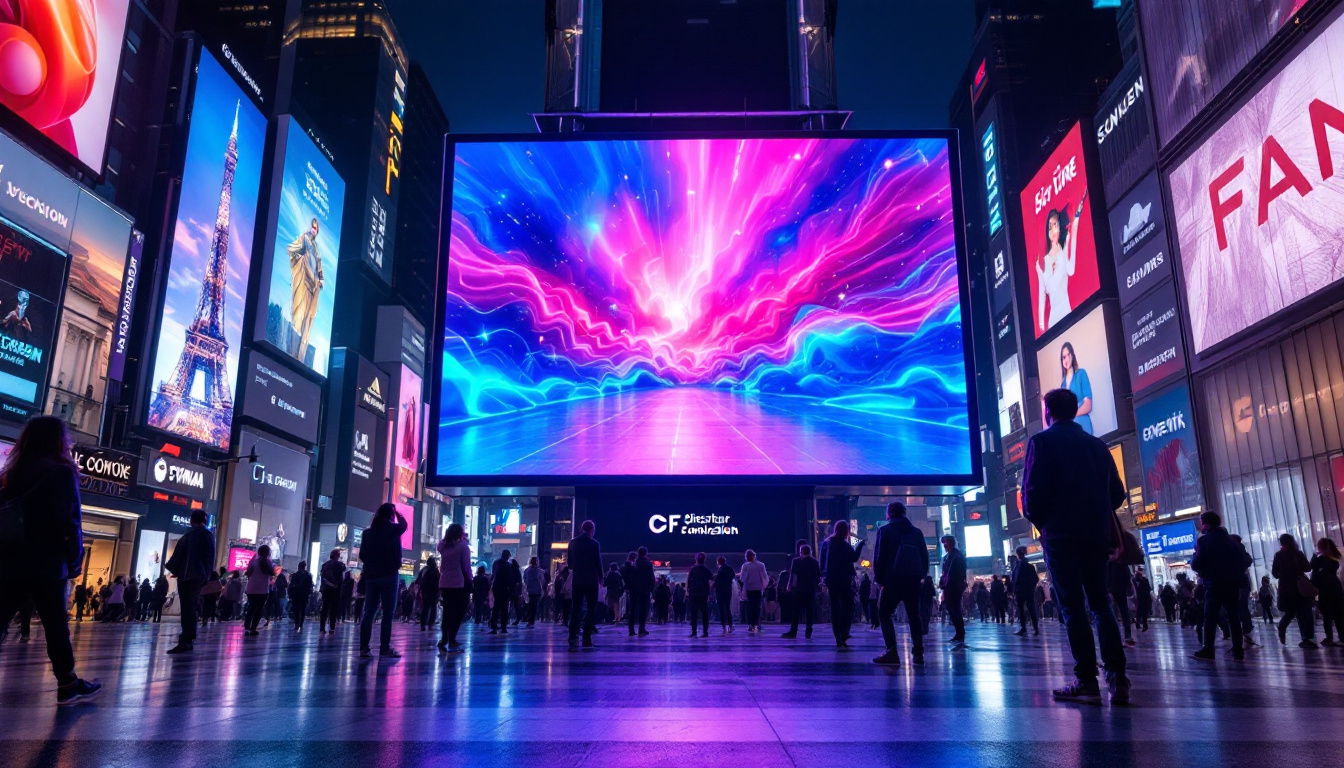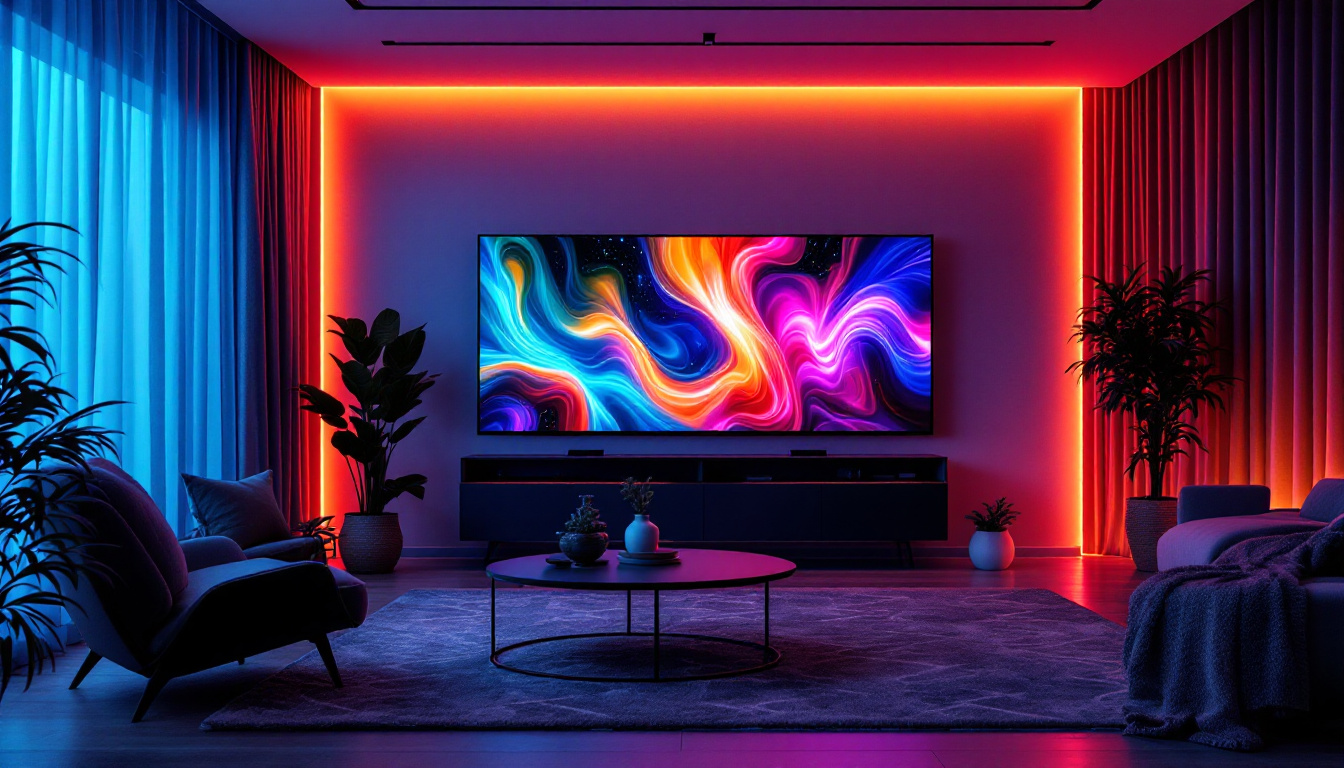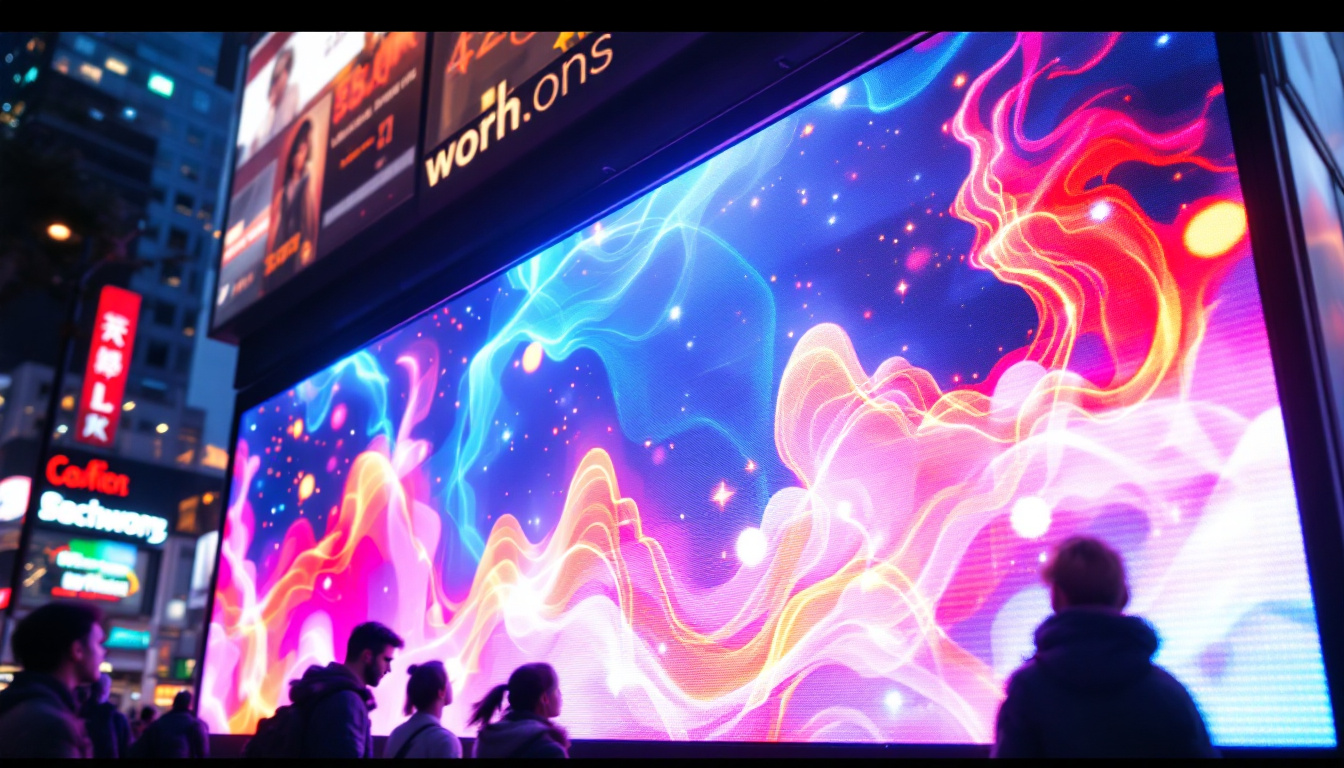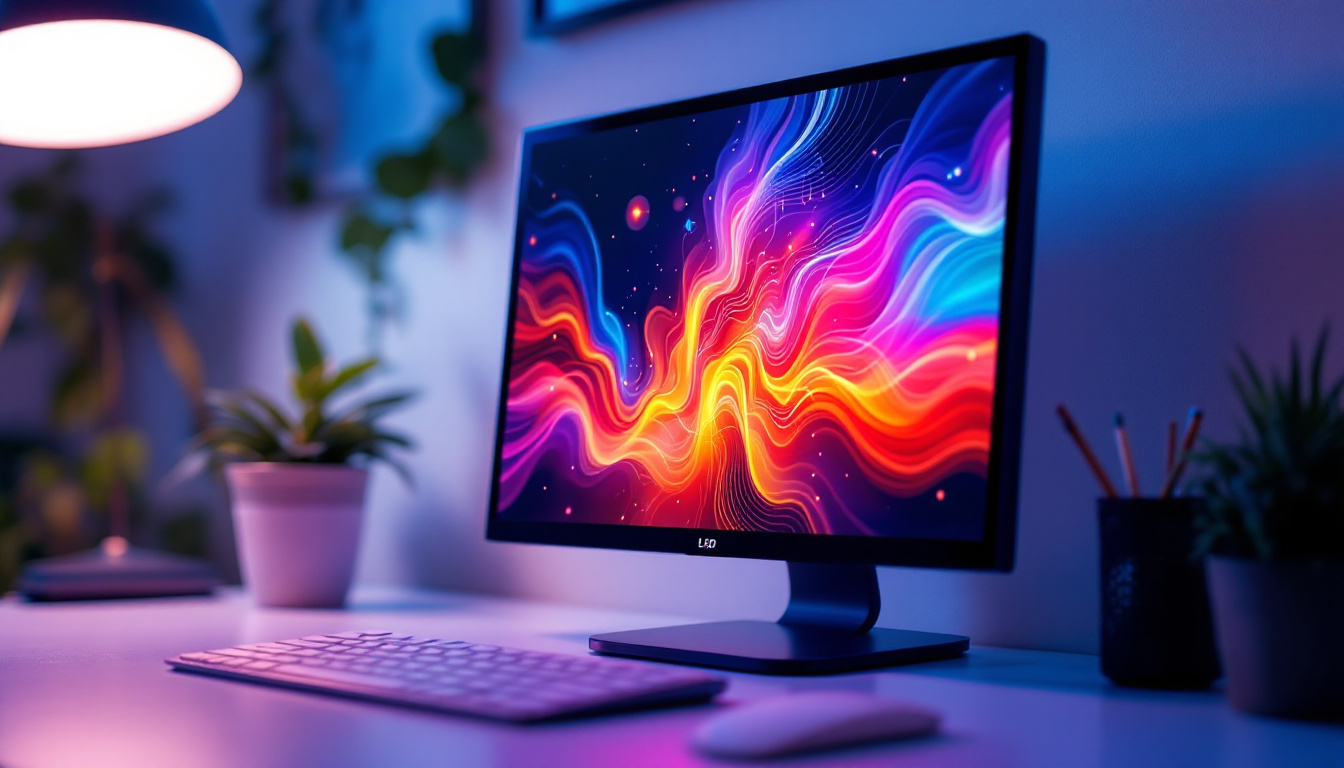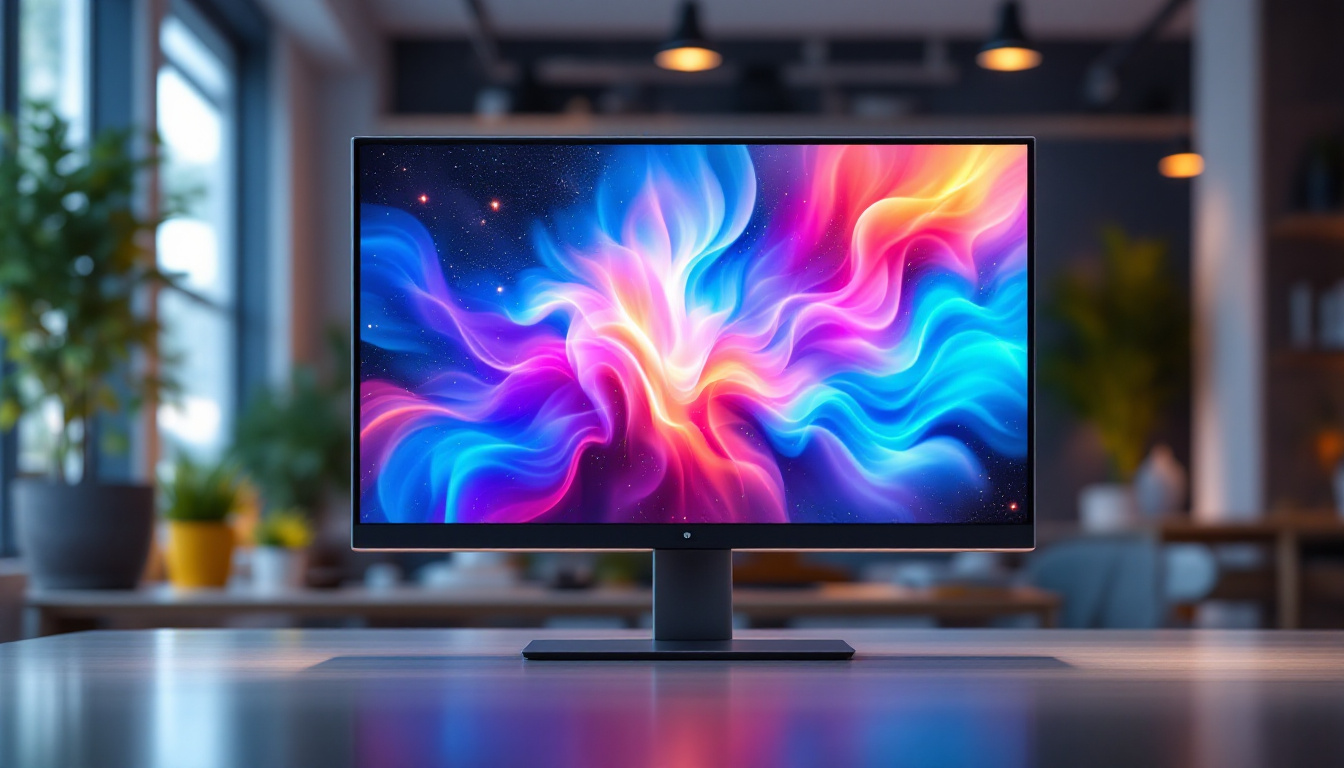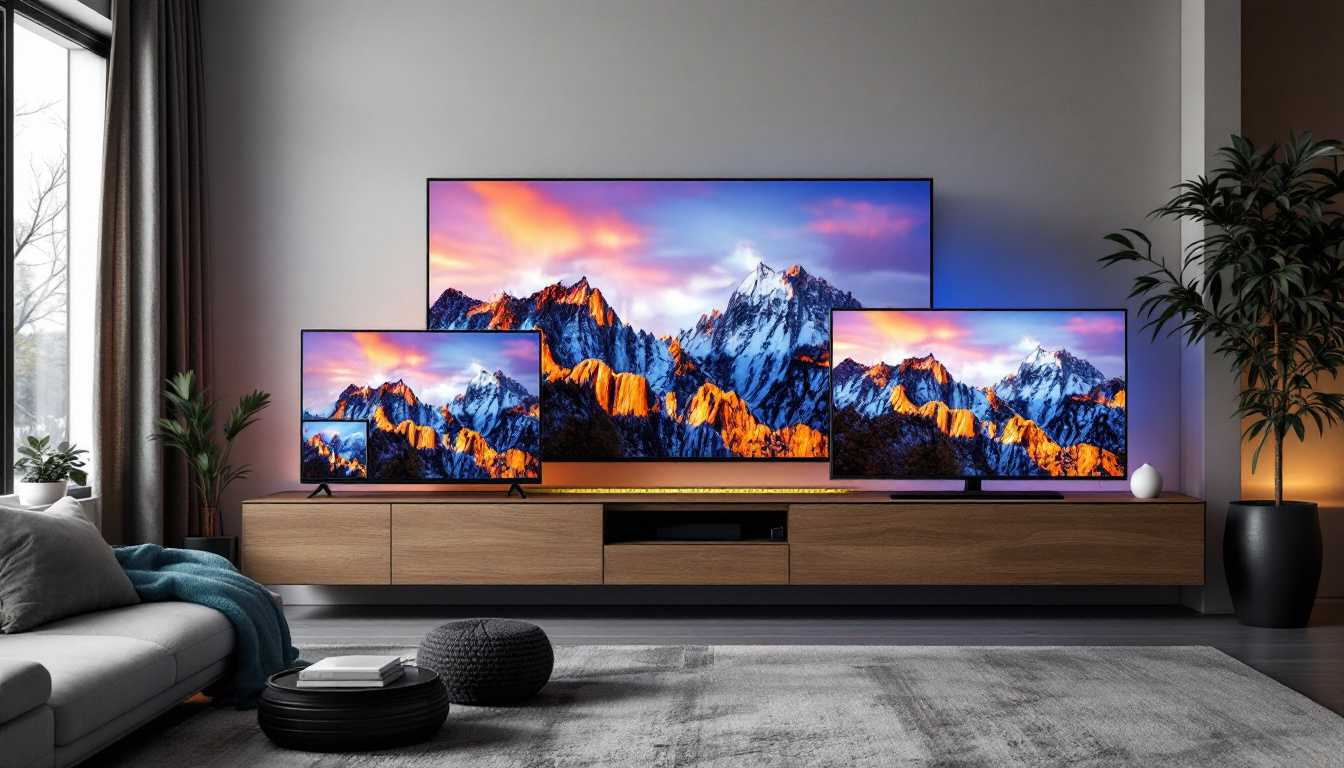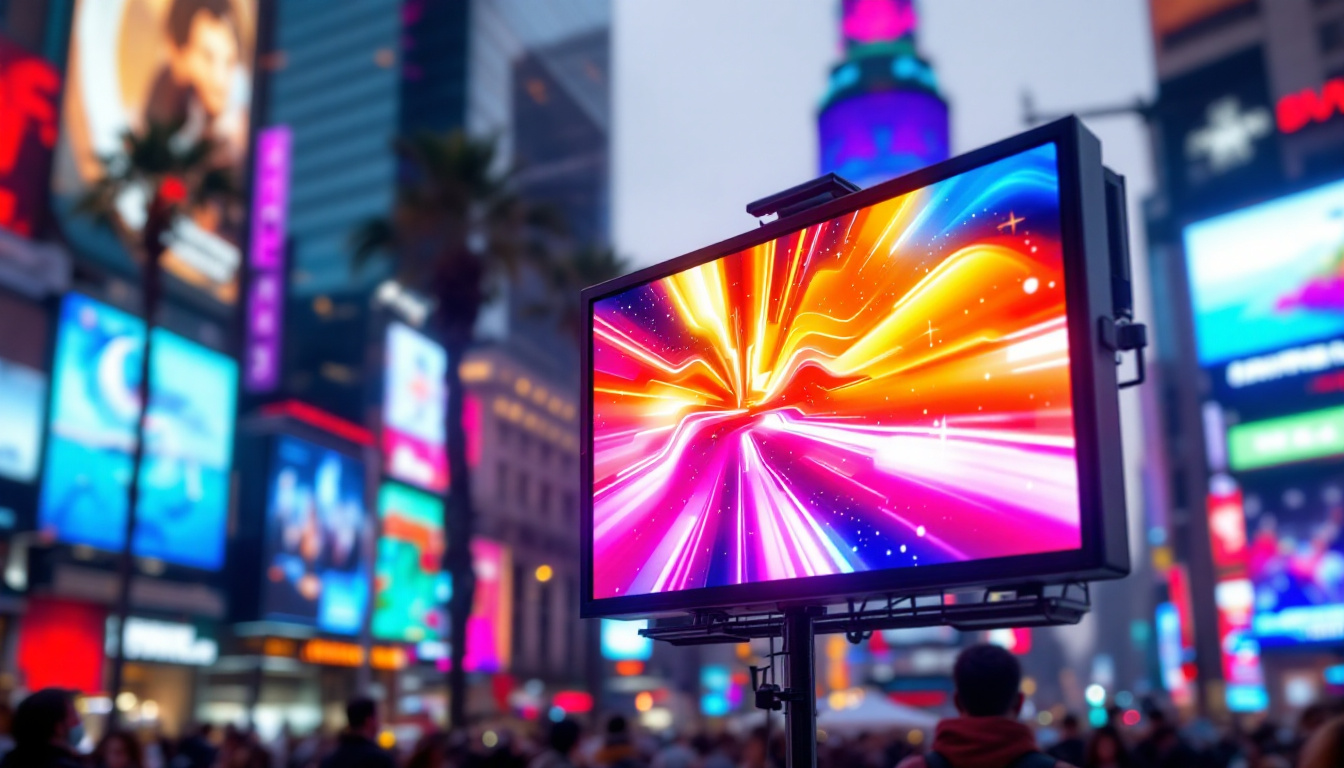In the ever-evolving world of technology, large flat screen monitors have become a staple in both personal and professional environments. With advancements in display technology, LED (Light Emitting Diode) displays have emerged as the preferred choice for many users. This article delves into the intricacies of LED displays in large flat screen monitors, exploring their benefits, types, and the technology behind them.
Understanding LED Technology
LED technology has transformed the way we view content on screens. Unlike traditional LCD monitors that utilize fluorescent backlighting, LED displays employ tiny diodes to produce light, offering a range of advantages that enhance the viewing experience.
How LED Displays Work
At the core of LED technology is the principle of electroluminescence, where a semiconductor material emits light when an electric current passes through it. This process allows for a more efficient and vibrant display. In large flat screen monitors, LED displays are typically categorized into two types: edge-lit and full-array.
Edge-lit LED displays position the diodes along the edges of the screen, directing light towards the center. This design allows for thinner screens but may result in uneven brightness. On the other hand, full-array LED displays feature a grid of diodes behind the screen, providing more uniform illumination and better contrast. Additionally, advancements in local dimming technology have further improved the performance of full-array displays, enabling them to dynamically adjust brightness in different areas of the screen, resulting in an even more immersive viewing experience.
The Benefits of LED Displays
LED displays offer numerous advantages over their LCD counterparts. One of the most notable benefits is energy efficiency. LED monitors consume significantly less power, making them an eco-friendly option that can lead to lower electricity bills.
Moreover, LED displays provide superior color accuracy and brightness levels. This is particularly beneficial for graphic designers, photographers, and gamers who require precise color representation. The contrast ratios in LED displays also enhance the viewing experience, allowing for deeper blacks and brighter whites. In addition to these visual enhancements, LED technology has also paved the way for thinner and lighter screens, making modern displays more portable and aesthetically pleasing. As a result, consumers can enjoy a sleek design without compromising on performance, whether they’re using a monitor for work, entertainment, or creative pursuits.
Types of Large Flat Screen Monitors
When it comes to large flat screen monitors, consumers are presented with various options, each designed to cater to specific needs. Understanding these types can help in making an informed decision based on usage requirements.
LED Monitors
LED monitors are the most common type of large flat screen displays available today. They provide a crisp and vibrant viewing experience, making them suitable for a wide range of applications, from gaming to professional graphic design. With advancements in technology, LED monitors have become increasingly affordable, making them accessible to a broader audience.
These monitors come in various sizes and resolutions, allowing users to choose the perfect fit for their workspace or entertainment setup. Many LED monitors also feature energy-efficient designs, which can help reduce electricity bills over time. Additionally, some models offer advanced features such as adaptive sync technology, which minimizes screen tearing during fast-paced gaming, further enhancing the overall experience.
OLED Monitors
Organic Light Emitting Diode (OLED) monitors represent a significant leap in display technology. Unlike traditional LED monitors, OLED displays do not require a backlight, as each pixel emits its own light. This results in unparalleled contrast ratios and color accuracy, making OLED monitors ideal for high-end gaming and professional video editing.
However, OLED technology comes with its own set of challenges, including potential burn-in issues and higher costs. Despite these drawbacks, many users find the superior picture quality worth the investment. The deep blacks and vibrant colors of OLED displays create a stunning visual experience, particularly in dark environments. Furthermore, as manufacturers continue to innovate, newer OLED models are being developed with features aimed at mitigating burn-in risks, making them even more appealing to consumers.
QLED Monitors
Quantum Dot LED (QLED) monitors are another innovative option in the large flat screen market. Utilizing quantum dot technology, these monitors enhance color accuracy and brightness levels beyond what standard LED displays can achieve. QLED monitors are particularly popular among gamers and movie enthusiasts who seek an immersive viewing experience.
While QLED displays are generally more expensive than traditional LED monitors, their performance and longevity make them a compelling choice for serious users. Many QLED monitors also come equipped with features such as high dynamic range (HDR) support, which allows for a wider range of brightness and color detail in images. This makes them especially suitable for watching movies or playing video games that are designed to take advantage of HDR technology. Additionally, QLED monitors often feature a longer lifespan compared to OLEDs, as they are less susceptible to burn-in, providing peace of mind for users who spend long hours in front of their screens.
Choosing the Right Monitor for Your Needs
Selecting the right large flat screen monitor involves considering various factors, including intended use, budget, and personal preferences. Understanding these elements can help narrow down the options available in the market.
Intended Use
The first step in choosing a monitor is to determine its primary purpose. For casual browsing and office work, a standard LED monitor may suffice. However, for graphic design, video editing, or gaming, investing in an OLED or QLED monitor could provide significant advantages in terms of color accuracy and response time.
Budget Considerations
Budget plays a crucial role in the decision-making process. While high-end monitors offer exceptional performance, they also come with a hefty price tag. It’s essential to balance the desired features with what is financially feasible. Many mid-range monitors offer excellent performance without breaking the bank, making them suitable for most users.
Screen Size and Resolution
Screen size and resolution are also vital factors to consider. Larger screens provide a more immersive experience, especially for gaming and multimedia consumption. However, it’s essential to ensure that the resolution matches the screen size to avoid pixelation. A 4K resolution is ideal for larger screens, providing sharp and detailed images.
Key Features to Look For
When shopping for a large flat screen monitor, several features can enhance the overall experience. Understanding these features can help users make an informed choice that aligns with their needs.
Refresh Rate
The refresh rate, measured in hertz (Hz), indicates how many times per second the monitor refreshes the image on the screen. A higher refresh rate results in smoother motion, which is particularly important for gaming and fast-paced video content. Monitors with a refresh rate of 120Hz or higher are recommended for gamers seeking a competitive edge.
Response Time
Response time refers to how quickly a pixel can change from one color to another. A lower response time reduces motion blur and ghosting effects, making it essential for gaming and action-packed movies. Look for monitors with a response time of 5ms or lower for optimal performance.
Connectivity Options
Modern monitors come equipped with various connectivity options, including HDMI, DisplayPort, and USB-C. Having multiple ports allows for flexibility in connecting different devices, such as gaming consoles, laptops, and external storage. Ensuring that the monitor has the necessary ports for your devices can enhance usability.
Maintenance and Care for LED Monitors
Proper maintenance of large flat screen monitors can prolong their lifespan and ensure optimal performance. Regular care can prevent common issues and keep the display in excellent condition.
Cleaning Your Monitor
Dust and fingerprints can accumulate on the screen, affecting visibility and overall aesthetics. To clean an LED monitor, use a microfiber cloth and a gentle cleaning solution specifically designed for electronics. Avoid using harsh chemicals or abrasive materials, as these can damage the screen.
Adjusting Settings
Most monitors come with customizable settings that allow users to adjust brightness, contrast, and color balance. Regularly reviewing and adjusting these settings can enhance the viewing experience, especially in different lighting conditions. Calibration tools are available for those seeking precise adjustments.
Power Management
To extend the life of an LED monitor, consider implementing power management practices. Using the monitor’s sleep mode when not in use and unplugging it during extended periods of inactivity can reduce wear and tear. Additionally, keeping the monitor in a cool, dry environment can prevent overheating.
Future Trends in Monitor Technology
The world of large flat screen monitors is continuously evolving, with new technologies on the horizon. Staying informed about these trends can help consumers make educated decisions in the future.
Mini-LED Technology
Mini-LED technology is gaining traction as a promising advancement in display technology. By utilizing smaller LEDs for backlighting, this technology allows for more precise control over local dimming zones, resulting in improved contrast and brightness. Mini-LED monitors are expected to offer a significant upgrade over traditional LED displays.
MicroLED Displays
MicroLED displays represent the next frontier in screen technology. Similar to OLED, MicroLED does not require a backlight, as each pixel emits its own light. This technology promises exceptional color accuracy, brightness, and energy efficiency. As MicroLED becomes more commercially viable, it may redefine the standards for large flat screen monitors.
Enhanced Gaming Features
The gaming industry is driving many innovations in monitor technology. Features such as variable refresh rates, adaptive sync technologies, and integrated gaming modes are becoming standard in new monitors. As gaming continues to grow in popularity, expect to see even more enhancements tailored to gamers’ needs.
Conclusion
Large flat screen monitors with LED displays have revolutionized the way users interact with technology. With their energy efficiency, vibrant colors, and diverse options, they cater to a wide range of needs and preferences. Understanding the different types of monitors, their features, and how to maintain them can help consumers make informed decisions that enhance their viewing experience.
As technology continues to advance, staying abreast of the latest trends will ensure that users can take full advantage of the innovations in display technology. Whether for work, play, or entertainment, a large flat screen monitor remains an invaluable tool in the digital age.
Discover LumenMatrix’s Advanced LED Display Solutions
Ready to elevate your visual experience with the latest in LED display technology? Look no further than LumenMatrix, a pioneer in crafting innovative LED display modules that bring your content to life. From the immersive Indoor LED Wall Display to the dynamic Outdoor LED Wall Display, and from the mobile versatility of Vehicle LED Displays to the interactive Floor LED Displays, LumenMatrix offers a comprehensive range of solutions tailored to your needs. Embrace the future of visual communication and captivate your audience with unparalleled clarity and impact. Check out LumenMatrix LED Display Solutions today and transform the way you share your message.

